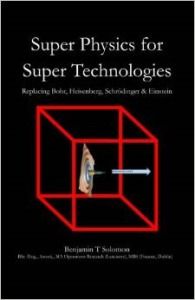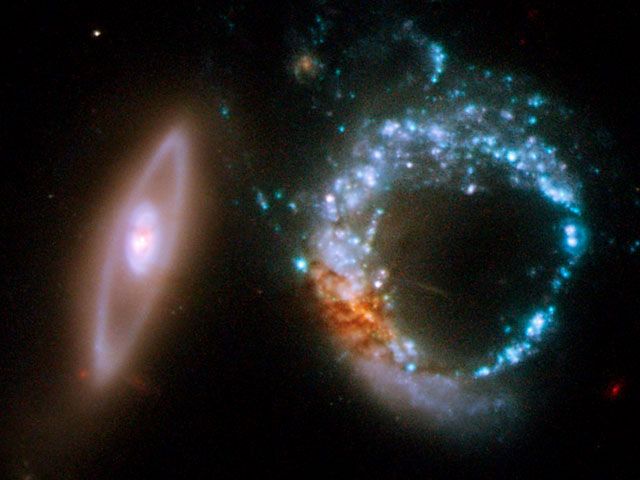Archive for the ‘astronomy’ category: Page 6
May 21, 2015
NASA and The Planetary Society Launch the LightSail
Posted by Odette Bohr Dienel in categories: astronomy, cosmology, education, energy, habitats, physics, science, solar power, space, space travel
Apr 24, 2015
To be a Space Faring Civilization
Posted by Benjamin T. Solomon in categories: astronomy, cosmology, human trajectories, innovation, science, space, space travel, transportation
Until 2006 our Solar System consisted essentially of a star, planets, moons, and very much smaller bodies known as asteroids and comets. In 2006 the International Astronomical Union’s (IAU) Division III Working Committee addressed scientific issues and the Planet Definition Committee address cultural and social issues with regard to planet classifications. They introduced the “pluton” for bodies similar to planets but much smaller.
The IAU set down three rules to differentiate between planets and dwarf planets. First, the object must be in orbit around a star, while not being itself a star. Second, the object must be large enough (or more technically correct, massive enough) for its own gravity to pull it into a nearly spherical shape. The shape of objects with mass above 5×1020 kg and diameter greater than 800 km would normally be determined by self-gravity, but all borderline cases would have to be established by observation.
Third, plutons or dwarf planets, are distinguished from classical planets in that they reside in orbits around the Sun that take longer than 200 years to complete (i.e. they orbit beyond Neptune). Plutons typically have orbits with a large orbital inclination and a large eccentricity (noncircular orbits). A planet should dominate its zone, either gravitationally, or in its size distribution. That is, the definition of “planet” should also include the requirement that it has cleared its orbital zone. Of course this third requirement automatically implies the second. Thus, one notes that planets and plutons are differentiated by the third requirement.
As we are soon to become a space faring civilization, we should rethink these cultural and social issues, differently, by subtraction or addition. By subtraction, if one breaks the other requirements? Comets and asteroids break the second requirement that the object must be large enough. Breaking the first requirement, which the IAU chose not address at the time, would have planet sized bodies not orbiting a star. From a socio-cultural perspective, one could suggest that these be named “darktons” (from dark + plutons). “Dark” because without orbiting a star, these objects would not be easily visible; “tons” because in deep space, without much matter, these bodies could not meet the third requirement of being able to dominate its zone.
Tags: 55 Cancri e, AIAA, American Institute of Aeronautics & Astronautics, atmosmax, auton, darktons, Division III Working Committee, galactica, IAU, International Astronomical Union, kyton, NASA, Nuclear and Future Flight Propulsion Technical Committee, Planet Definition Committee, planetary science, Pluton, solarmax, Space Faring Civilization, starship, Y-Dwarfs, zoeton
Apr 24, 2015
Article: Harnessing “Black Holes”: The Large Hadron Collider – Ultimate Weapon of Mass Destruction
Posted by LHC Kritik in categories: astronomy, big data, computing, cosmology, energy, engineering, environmental, ethics, existential risks, futurism, general relativity, governance, government, gravity, information science, innovation, internet, journalism, law, life extension, media & arts, military, nuclear energy, nuclear weapons, open source, particle physics, philosophy, physics, policy, posthumanism, quantum physics, science, security, singularity, space, space travel, supercomputing, sustainability, time travel, transhumanism, transparency, treaties
Harnessing “Black Holes”: The Large Hadron Collider – Ultimate Weapon of Mass Destruction
Why the LHC must be shut down
What would you have done to stop catastrophic events if you knew in advance what you know now.
We have the moral obligation to take action in every way we can.
The future is in our hands. The stakes are the highest they have ever been. The Large Hadron Collider developed by the European Centre for Nuclear Research (CERN) is a dangerous instrument. The start-up April 5 has initiated a more reckless use of LHC’s capabilities.
Continue: http://www.globalresearch.ca/the-large-hadron-collider-ultim…on/5442232
Apr 24, 2015
CERN-Critics: LHC restart is a sad day for science and humanity!
Posted by LHC Kritik in categories: astronomy, big data, complex systems, computing, cosmology, energy, engineering, ethics, existential risks, futurism, general relativity, governance, government, gravity, hardware, information science, innovation, internet, journalism, law, life extension, media & arts, military, nuclear energy, nuclear weapons, particle physics, philosophy, physics, policy, quantum physics, science, security, singularity, space, space travel, supercomputing, sustainability, time travel, transhumanism, transparency, treaties
Continue reading “CERN-Critics: LHC restart is a sad day for science and humanity!” »
Mar 24, 2015
Super Physics for Super Technologies
Posted by Benjamin T. Solomon in categories: astronomy, cosmology, defense, disruptive technology, education, engineering, general relativity, particle physics, physics, quantum physics, science, space travel
 Title: Super Physics for Super Technologies
Title: Super Physics for Super Technologies
Sub Title: Replacing Bohr, Heisenberg, Schrödinger & Einstein
Author: Benjamin T Solomon
Paperback: 154 pages
Publisher: Propulsion Physics, Inc. (March 19, 2015)
ISBN-10: 1508948011
ISBN-13: 978–1508948018
Language: English
Publisher’s Link: Super Physics for Super Technologies
Amazon’s Link: Super Physics for Super Technologies
Reviewer’s comments: “Benjamin is the second researcher I have met who has tried to consider a nonsingular cosmology. The first was Christi Stoica, which I met in 2010″.
Andrew Beckwith PhD
The Objective: This book, Super Physics for Super Technologies, proposes that a new physics exists. The findings are based on 16 years of extensive numerical modeling with empirical data, and therefore, both testable and irrefutable.
Tags: AIAA, American Institute of Aeronautics & Astronautics, Bohr, Christi Stoica, Efstathiou, Einstein, Hesisenberg, Hubble, Invisibility, Kavli Foundation, Lockheed, Nemiroff, Nuclear and Future Flight Propulsion Technical Committee, Planck Space Telescope, Pryke, Rydberg equation, Schrödinger, stealth
By Rebecca Morelle — BBC

“I’ve been a solar physicist for 30 years, and I’ve never seen anything quite like this,” says Richard Harrison, head of space physics at the Rutherford Appleton Laboratory in Oxfordshire.
He shows me recent footage captured by spacecraft that have their sights trained on our star. The Sun is revealed in exquisite detail, but its face is strangely featureless.
Sep 29, 2014
Australian digital radar innovation attracts global attention
Posted by Frans van Wamel in categories: astronomy, climatology, electronics, engineering, environmental, innovation, surveillance
An innovative Australian digital radar built with a series of modified rugby goalposts is attracting worldwide attention the ABC reports.
A consortium led by La Trobe University in Melbourne developed the Tiger-3 digital radar, which is 10 times more sensitive than any other research radar. Lead researcher Professor John Devlin said the radar would be used to study space weather, which has an impact on navigation and surveillance systems for shipping and aircraft, as well as for GPS systems. “It measures the ionospheric reflections from a distance out to about 5,000 kilometres,” he said.
Researchers measure the data to study space weather, like recent solar flares, which can potentially knock out power, satellites, navigation and surveillance systems for shipping, aircraft and GPS.
The recent solar flares just grazed the Earth, but Dr Custovic said flares had the potential to knock out transformers, potentially shutting off power for weeks.
Continue reading “Australian digital radar innovation attracts global attention” »
Aug 28, 2014
Funding Request
Posted by Benjamin T. Solomon in categories: astronomy, business, cosmology, defense, disruptive technology, general relativity, physics, quantum physics, science, space, space travel

Astrophysicists like Robert Nemiroff have shown, using Hubble photographs, that quantum foam does not exist. Further, the famous string theorists, Michio Kaku, in his April 2008 Space Show interview stated that string theories will require hundreds of years before gravity modification is feasible.
Therefore the need to fund research into alternative propulsion technologies to get us into space cheaper and quicker. We can be assured that such space technologies will filter down into terrestrial technologies.
Aug 15, 2014
“Google Street View” of the Cosmos Unveiled
Posted by Seb in categories: astronomy, space
The Daily Galaxy via University of Sydney

A new home-grown instrument based on bundles of optical fibres is giving Australian astronomers the first ‘Google street view’ of the cosmos — incredibly detailed views of huge numbers of galaxies. Developed by researchers at the University of Sydney and the Australian Astronomical Observatory, the optical-fibre bundles can sample the light from up to 60 parts of a galaxy, for a dozen galaxies at a time. The technological leap is the ‘hexabundle’, sixty or more optical fibres close-packed and fused together, developed by the University of Sydney’s astrophotonics group.








